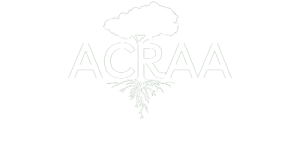Plants for Use in Ecological Restoration / Reforestation
The ACRAA nursery dedicates approximately half of its production to trees and plants for ecological restoration and reforestation efforts. We adhere to strict protocols, using exclusively native species that either naturally occur at or are ecologically suited to each planting site.
To ensure traceability and quality control, we implemented a comprehensive seed-lot numbering and tracking system. Since March 2022, this system has been managed by our Brazilian Forest Engineer.
Our classification system organizes trees and plants into three ecological categories, each marked by a distinct prefix:
P – Árvores de Mata Ciliar (Riparian Forest Trees): Species native to the floodplain zones along the Tapajós River.
F – Árvores da Floresta (Upland Forest Trees): Species adapted to the terra firme forests surrounding Alter do Chão.
I – Árvores de Igarapés (Streamside Vegetation): Species thriving along the banks of small forest streams and natural springs.
Each seedlot represents seeds collected from either a single mother tree or a group of conspecific trees within a defined area, harvested during a specific timeframe. We document every seedlot with photographs of the source trees, detailed descriptions, and precise GPS coordinates.
Beyond fulfilling Brazilian forestry requirements, this system enables us to revisit mother trees for taxonomic verification—a process currently underway to confirm the scientific names of all propagated species.
Our current impact and inventory includes:
-
Over 1,000 ecological restoration trees successfully planted to date
-
Seedlings of more than ten species of riparian forest trees
-
Seeds from eight additional species in active propagation (germination phase)
Photographs 1 through 4 showcase representative specimens from our Riparian Forest Trees collection.
[1] The “inundation zone” of the local river beaches is that area seasonally flooded due to annual fluxuations in the river level.
[2] At present in addition the designated species number (e.g, P1, P2 or F1, F2 ect.), the locally used common name is assigned to each species where this is known. Waldeir is working on keying out the latin name for each species now, although for some species specialized expertice may be required.
MORE GREEN, MORE LIFE
Rua Everaldo Martins, s/n., Bairro Carauari, Alter do Chão, Santarém-PA. CEP 68109-000
contact@acraabrazil.org
CNPJ: 50161.510/0001-19

MORE GREEN, MORE LIFE
Rua Everaldo Martins, s/n., Bairro Carauari, Alter do Chão, Santarém-PA. CEP 68109-000
contact@acraabrazil.org
CNPJ: 50161.510/0001-19
